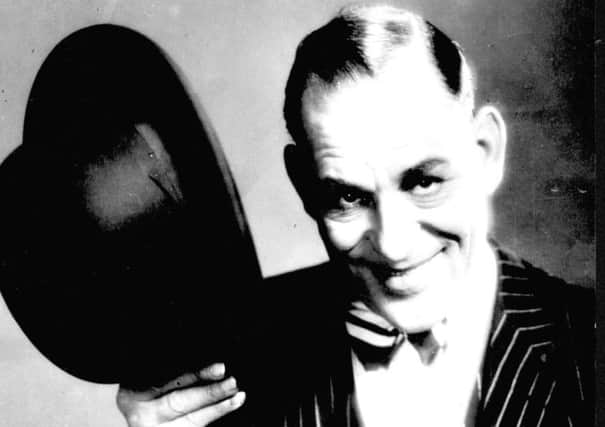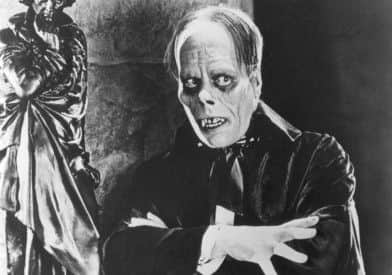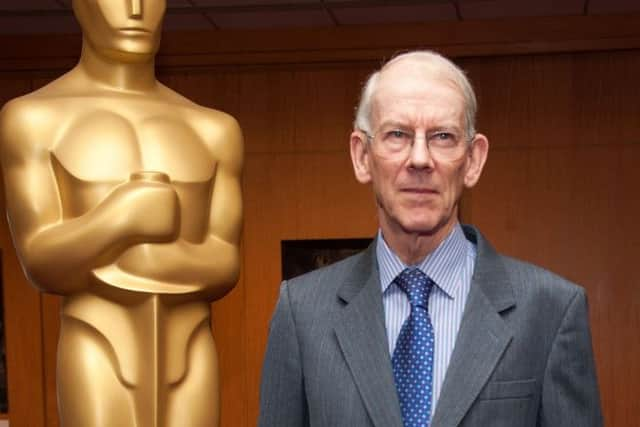Kevin Brownlow: Giving silent movies a voice


KEVIN Brownlow is the Indiana Jones of the cinema world. Over the course of a six-decade obsession with silent movies, he has scoured the globe in the quest for lost gems of silent cinema. When there were still silent era movers and shakers alive, he tracked them down and gave them a voice. He has restored and resurrected some of the greatest films to emerge from the 1910s and 1920s. His services to cinema have earned him many plaudits but none as prestigious as the honorary lifetime achievement Academy Award with which he was presented at the 2010 Oscars.
Brownlow’s love affair with silent cinema began when he was a schoolboy in Sussex, when silent films were not only unfashionable, but regarded as a bit of a joke. As a septuagenarian, his love is as strong as ever – but it is now widely shared: silent film seems increasingly to be celebrated (The Artist, anyone?), not least by dedicated film festivals such as our own Hippodrome Festival of Silent Cinema in Bo’ness which Brownlow will attend this week to introduce his definitive documentary on silent star Lon Chaney.
Advertisement
Hide AdSo how did a boy hitting adolescence in the era of splashy musicals, glorious Technicolor and Ealing’s golden age become so obsessed with films made in the earliest years of cinema that it became his life’s work? And how was he even exposed to them, given that they were already out of vogue before he was born?


Brownlow explains: “I was sent to boarding school – a grim place. The only good thing the headmaster did for us was every Sunday evening in the winter he would show us films in the chapel. He couldn’t afford a sound projector so we saw silent films, which you could then still rent from photographic shops. So I saw the films of my parents’ generation, and they made a great impression on me. I loved Harold Lloyd and Chaplin – because his leading lady Edna Purveyance looked a bit like my mother, and I loved seeing her.”
Not only did these screenings introduce Brownlow to silent films; they also planted a seed in his brain. “I realised that you could easily turn any room into a cinema with a projector, so I went on and on at my parents for one. They eventually got me a projector for Christmas when I was ten, and I realised I’d made a ridiculous mistake – I’d forgotten to say ‘movie’ projector; I got a still one.”
Brownlow finally obtained the right projector the following year, but as he only had two films to play on it, he “had to go out into the streets of London and look for more”. At his first port of call he found a pile of films that fitted his projector. “I didn’t know any of the people in them but my parents recognised Douglas Fairbanks at once – he was their favourite – and I was thrilled.” The 1916 film was entitled American Aristocracy.
“Later on I discovered that the man who played the villain was living quite close by, in London. He was now an agent and he knew exactly who was coming in and out of London. He used to tell me things like: ‘King Vidor, Hyde Park Hotel – tell him I sent you!’ That’s how it all started.”


“It all” refers to Brownlow’s weird and wonderful navigation through the scattered society of silent movie folk who were still around when he was beginning to make his name as a film historian and restorer. Through tip-offs, mutual acquaintances, his own initiative and lots of what he calls “happy accidents”, he managed to meet many of the greats – the likes of Buster Keaton and Gloria Swanson – long before he made his landmark, and epic, 1980 television documentary Hollywood.
Advertisement
Hide AdIndeed, the first big silent star Brownlow met turned out to be working a few streets away from his family home. By 1954, Bessie Love was working as a stage actress, touring Britain. Brownlow spotted her name on the playbill for the local theatre and, in disbelief, sent a note to her asking “Are you THE Bessie Love?”. He told her he had a 9.5mm film of her from 1916, and she asked to see it.
Brownlow recalls: “We were all a bit concerned because the house we lived in had been very beaten up by the Blitz – bits kept falling off. My mother had put a very heavy curtain across the door to keep out the cold, and when Bessie came in, the whole pelmet fell on top of her. Luckily, we heard giggles coming from beneath and she thought it a huge joke. She turned out to be absolutely delightful, and became a friend for the rest of her life. In fact, on the Hollywood series, we took her with us to Los Angeles to help us with difficult people – and she got us Mary Astor!”
Advertisement
Hide AdHaving been stood up by Mary Pickford during his first expedition to Hollywood, in 1964, when he notched up 28 interviews in ten days, Brownlow finally managed to interview her during a visit to Britain in the 1960s. “Luckily I met a film man here who was married to her niece. She used to come over frequently to visit her so I was included in one of those meetings. What got me the invitation was my promise to show her a film starring her brother. She wanted very much to see him again – he’d died in 1933. So it was very moving.”
Lon Chaney, the subject of the documentary A Thousand Faces, which opens the Hippodrome Festival on Wednesday, died during the transition period from silent movies to talkies and is, says Brownlow, an immensely important figure in film history. “Why? Because he had the most extraordinary ability to wear make-up as though it was natural, and as soon as you saw his character, you believed him. The fact that he could transform himself into the Phantom of the Opera or the Hunchback of Notre Dame just fascinated audiences at the time who had never seen anybody conveying the disabled self so powerfully.”
To begin with, the young Brownlow couldn’t understand his appeal – until he saw a print of The Hunchback Of Notre Dame. “You felt a sympathy for this hideous-looking character that only a great actor could convey. It was repeated years and years later – that Lon Chaney approach – by John Hurt in The Elephant Man. He was able to put on a make-up which would make people run out of the theatre normally, but he put such humanity into it that you were quite fascinated and touched by the man.”
What’s clear from talking to Brownlow is that, as much as anything else, it’s his infectious and inexhaustible passion for silent film that has opened doors for him – and which drives him onwards. Asked if there’s a single lost film which tops his (vast) Holy Grail list, he immediately replies: “Yes, a film called Hollywood, from 1923, starring everybody in silent Hollywood. Everybody you think of has cameos and it’s very tongue-in-cheek and full of experimental scenes. It would be really fascinating to see.” n
Lon Chaney – A Thousand Faces, followed by Q&A, is screening at the Hippodrome, Bo’ness, on Wednesday, 12 March
OTHER HIGHLIGHTS
Beggars of Life (Thursday) Romantic caper starring the legendary Louise Brooks, accompanied by rockabilly band The Dodge Brothers (featuring Mark Kermode)
Advertisement
Hide AdDragnet Girl (Saturday) Yasujiro Ozu’s take on the American gangster genre, with specially commissioned score performed by composer Jane Gardner
A Thousand Faces Special Effects Workshop (Sunday) Experts from the Make-up Artistry HND course at West College Scotland will show participants how to use make-up to create the effects of trauma.
Tickets for all events are available from www.hippfest.co.uk or the Hippodrome box office on 01324 506850